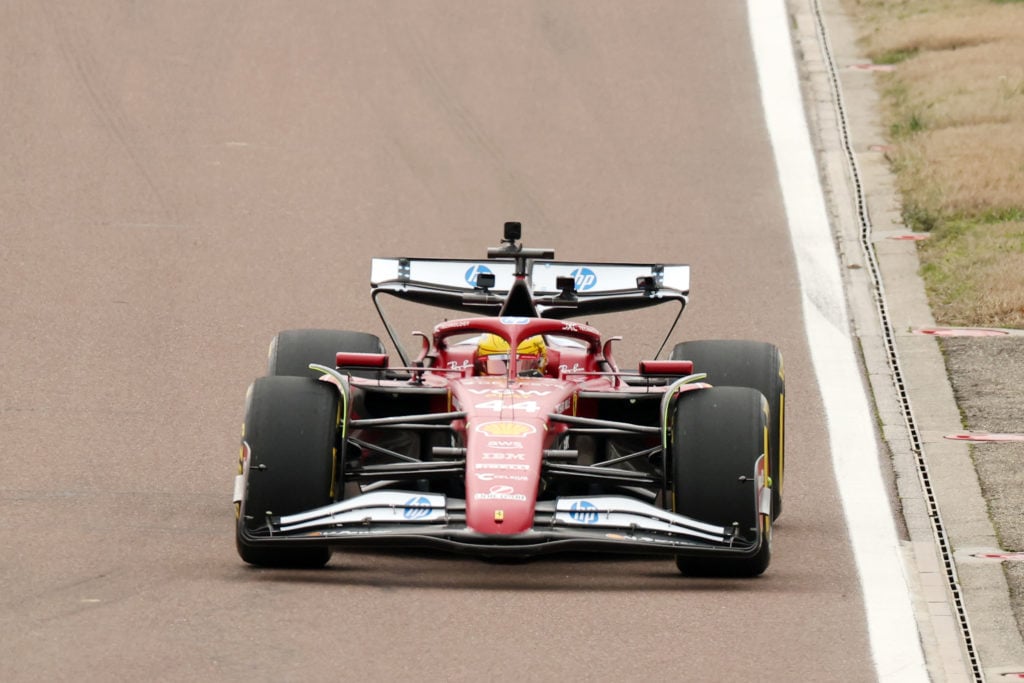The 2025 Formula 1 season is quickly approaching and every team would have taken to the Bahrain International Circuit for pre-season testing this time next week.
That will give fans the chance to see all 10 manufacturers in action for the first time and potentially all 20 F1 drivers together in the paddock.
However, the nature of Formula 1 pre-season testing means that although every driver will be in Bahrain, only one driver from each team can be on track at a time.
That means that Ferrari supporters will have to settle for seeing either Charles Leclerc or Lewis Hamilton preparing for the 2025 season when the lights go out at the end of the pit lane on Wednesday morning.
The Tifosi didn’t have to wait that long to see the SF-25 in action for the first time, with Ferrari’s private Fiorano track hosting a filming day on Wednesday after their official unveiling.
Leclerc’s car initially stopped on track although reportedly there wasn’t an issue, before Hamilton got to greet the fans who had once again turned out to see him in action.
Ferrari were so close to winning their first constructors’ championship since 2008 last year and will hope that the changes they’ve made will get them over the line.
Gary Anderson details changes to Ferrari’s 2025 Formula 1 car
Ferrari have followed McLaren and Williams in launching their cars before arriving in Bahrain for testing.
McLaren have made some bold design choices, while Williams have streamlined their car but very much have 2026 in mind when the regulations change.
Car designer and pundit Gary Anderson was speaking to The Race and gave his verdict on Ferrari’s new car.
He noted that the ‘radiator inlet is larger’ than last season and he believes this might be because Ferrari are expecting 2025 to be more competitive than last year.
READ MORE: Ferrari’s Mercedes capture already intervenes to make a big change to Lewis Hamilton’s 2025 F1 car
Anderson suggests that the radiator changes could be due to Ferrari expecting to be ‘running in traffic’ more often, meaning they will need to cool the car more regularly.
The radiator inlet is ‘more integrated’ into the bodywork, meaning that even if Ferrari aren’t following other cars more closely it should create more airflow.

Anderson has also spotted some ‘small openings’ along the spine of the engine cover as a larger radiator inlet requires a larger exit as well.
It’s similar to a system other teams in the paddock – including Alpine – are using suggesting that they’ve been able to study how it works elsewhere before incorporating it into their design.
Lewis Hamilton and Charles Leclerc will have no interest in following other cars
It’s unlikely that Ferrari have designed this year’s car with the aim of following their rivals.
Leclerc is such a strong qualifier that he’ll be confident of leading from the front if the SF-25 is quick enough over one lap.
However, from a tactical standpoint, Hamilton will know all about the struggles of driving a car that can’t follow its rivals, even if it’s expected to be at the front of the pack.
READ MORE: All you need to know about Scuderia Ferrari from team principal to factory
In 2017 when Mercedes were the dominant force in Formula 1, Hamilton said, via GPToday, when he got stuck behind Sergio Perez in Brazil: “That just shows there is obviously a weakness and a flaw in the car’s design, and while the cars are fantastic this year, that’s an area we can improve on for the future.”
Mercedes did improve that area but also designed a car that was fast enough to not need to worry about how well it performed in close proximity to its rivals.
Ferrari understand that’s not a risk they want to take and will hope this change allows Hamilton and Leclerc to easily overtake people on the track if they need to.

